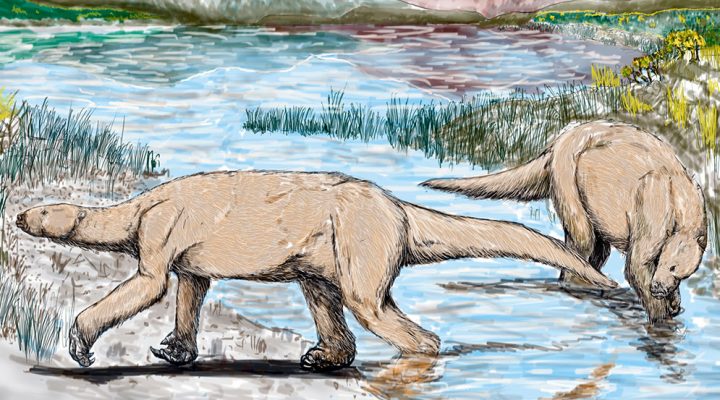EXACT AND NATURAL SCIENCES
First Fossils of an Aquatic Sloth Found in Continental Environment in Argentina
The remains of a specimen of Thalassocnus, a marine sloth found for the first time in a continental environment, have been discovered in Northern Argentina.
A team of CONICET paleontologists have discovered the remains of a specimen of Thalassocnus, a marine sloth, for the first time in a continental environment. The discovery occurred in the province of Jujuy, northern Argentina. The researchers estimate the age of the fossils to be between 3 and 5 million years old, corresponding to the period between the latest Miocene and the Pliocene.
Thalassocnus is a type of giant sloth that could reach almost two meters in length and weigh more than 120 kilos. The remains found in Jujuy belong to an upper limb of the animal and include the radius, ulna, and part of the articulated left hand.
An aquatic sloth on the mainland?
The research team poses two hypotheses in the paper. The first one estimates that the progressive aridization that developed since the Miocene on the Pacific coast could have been a factor that stimulated the dispersion of Thalassocnus towards southern zones, such as Chile, and later to continental zones, such as the eastern Puna, in search of favorable conditions.
The second hypothesis proposes that its original distribution could have been much broader, including Argentina, Peru, and Chile, and that later the most derived species adapted to marine environments.
“This specimen was found very far from the coast, so this new evidence indicates that this specimen, like other sloths that have been studied in Peru, were less adapted to marine environments and that they had the possibility of having a frugivorous and omnivorous diet”, adds Sofía Quiñones, CONICET postdoctoral fellow and first author of the research.
Why is this discovery important?
This discovery significantly expands the geographic distribution of this lineage of fossil sloths, and the importance of this record for Argentina and for the entire continent cannot be overstated. The research team continues to carry out annual campaigns in the region in search of new specimens that will allow for further expansion and elucidation of the history of this enigmatic animal.
The study was made by a research team that works at the “Laboratory of Evolution of Vertebrates and Cenozoic Environments” of the “Center for Applied Ecology of the Coast” (CECOAL, CONICET – UNNE), of the province of Corrientes, and the Faculty of Natural Sciences and Museum of the National University of La Plata (UNLP).
The article “Unexpected record of the aquatic sloth Thalassocnus (Mammalia, Xenarthra, Folivora) in the upper Neogene of the Puna (Jujuy, Argentina)” was published in the Journal of Vertebrate Paleontology in 2022.
References
Sofía I. Quiñones, Alfredo E. Zurita, Ángel R. Miño-Boilini, Adriana M. Candela & Carlos A. Luna (2022): Unexpected record of the aquatic sloth Thalassocnus (Mammalia, Xenarthra, Folivora) in the upper Neogene of the Puna (Jujuy, Argentina), Journal of Vertebrate Paleontology, https://doi.org/10.1080/02724634.2022.2109973
Source: CONICET Nordeste
